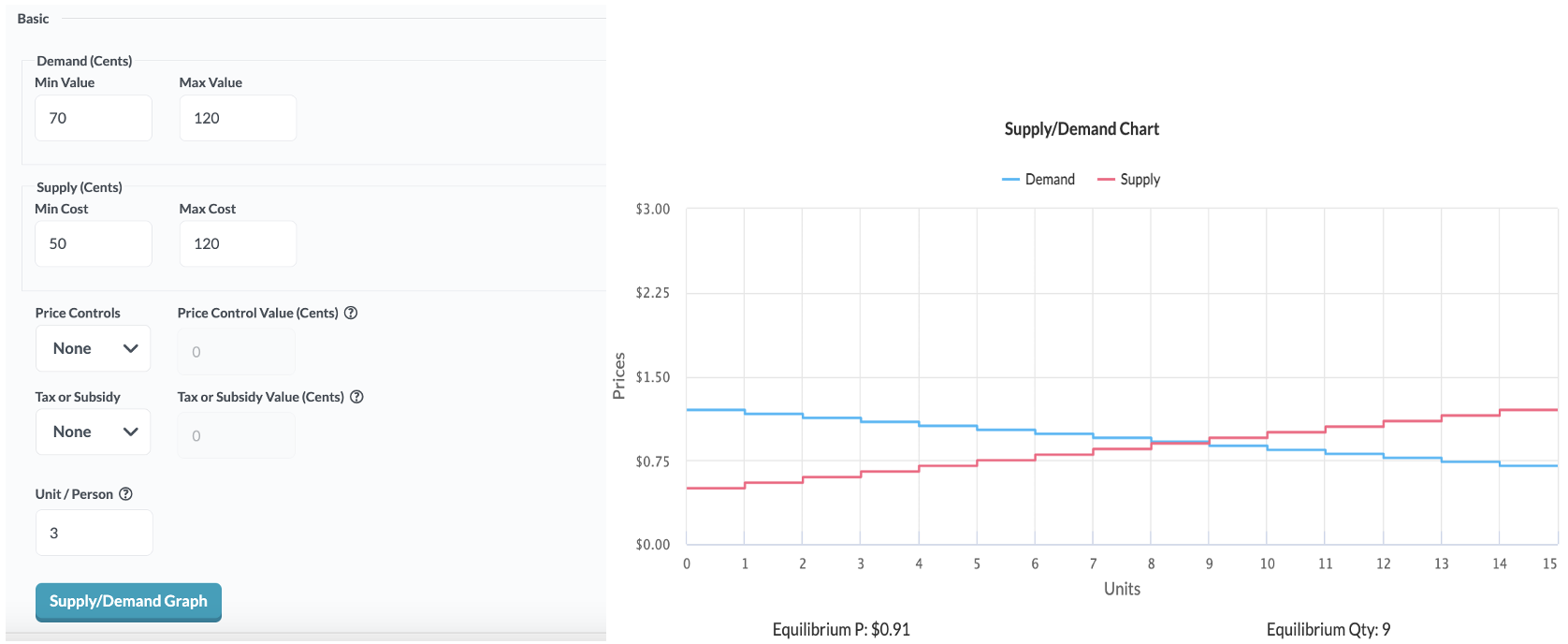Game 1: Competitive Market Baseline
In the basic market treatment, a key learning objective is to show how prices and quantity converge. A few factors to consider in execution are as follows:
Across periods, the transaction prices tighten more quickly around the equilibrium price. This is a good opportunity to ask your students, Why? Why did the transaction prices tighten across periods? What were you thinking? Did you change your strategy? All good questions! Ask students to record how many units they were personally able to buy or sell at the end of each trading period. Having this information on hand will facilitate the conversations about the units sold after a demand increase.
Game 2: Competitive Market - Demand Increase
With the demand increase, there are now more people wanting to buy oranges while the supply is roughly equal (Orange producers can’t respond that quickly - nature has its limits). This can be thought of as an extension of the demand curve and consequently more people willing to pay higher prices for an orange. You can create that kind of effect by simply increasing the value range for demand while keeping the supply side constant.
Building on the recommendation, if group size is 16 (and each buyer/seller has three units to buy/sell) you can recruit all the additional supply (24 compared to 15 in the baseline) by setting the minimum value of the demand curve to the maximum cost on the supply curve. With the default supply parameters this means changing the demand curve to 120 (min) and 170 (max).

Using the selected parameters, there should be a noticeable difference in how many were able to buy/sell their third unit in the demand-surge in the Demand-Surge games. This opens up conversations about how additional units were supplied to the market because buyers started to bid more for each unit. Of course, it is also useful to focus on the transaction prices and how behavior adjusts to converge to a new equilibrium price when there is a shift in demand.
Thus, through altering one parameter, we can create a simple and yet immersive environment for our students to live through a narrative and learn and appreciate to think like an economist. All of human history is told in stories and our brains are wired for narrative. The stories we tell ourselves and each other, as well as those told to us, create a framework for how we understand the way the world works. MobLab uses interactive economics games to create immersive environments for you to easily pair with a contemporary story. This will make your economic lessons stick way beyond the classroom.
Would you like to learn more? Get in touch with our team. Click here to schedule a one-on-one demo meeting.

